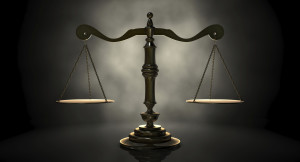 I have a reader’s question to respond to this week. The reader asked for some practical advice about what to do if he is involved in a collision where there is very little apparent damage and the police decline to attend.
I have a reader’s question to respond to this week. The reader asked for some practical advice about what to do if he is involved in a collision where there is very little apparent damage and the police decline to attend.
For a little over two years, I have been writing columns on a weekly basis. I’ve covered all sorts of topics related to car crash claims but I have never provided the very practical guidance this reader has asked for.
You pull up to an intersection facing a red light. Moments later, you hear a loud bang and feel your body being compressed into your seat, then flung into the seat belt like a rag doll. You remember the split-second thought that the seat belt felt more like a steel bar than a ribbon of fabric. You get out of your car and walk around to see if the other driver is OK. You are in shock. The adrenalin is pumping. You are not aware of having suffered any injuries. There are no broken bones and blood isn’t spurting from anywhere.
As you pass by your back bumper, you are surprised to see that the only apparent damage is some scuffing of the paint. You had expected to see the trunk demolished. The other driver seems fine, and there is no apparent damage to her vehicle either. You instinctively pull out your cell phone and call the police, but they decline to send out an officer.
The reader’s question was: “What do I do next?” The driver who hit you is standing there. She doesn’t want a black mark on her driving record that might cause her insurance rates to jump. She asks you if it is alright if she just pays you whatever it costs to make the bumper look pretty again. Do you agree? Do you call “Dial-a-claim”? What in-formation do you need from her? What the heck do you do?
This may seem heartless, but you absolutely do not agree with her proposition. However much she may bat her pretty little eyelashes, you do it “by the book”. If it turns out that you have suffered no injuries, and that the damage to your bumper can be repaired for a couple hundred bucks, the insurance company will give the offending driver the options of paying the repair costs herself or having it claimed against her liability insurance. There is no need whatsoever to agree to make a private deal with the other driver.
First things first. You’re still standing there in the middle of the road. The vehicles are where they ended up after the collision. Remain calm. Your first consideration should be safety. Assess the situation. Do whatever is necessary to minimize the chances of you, the other driver or someone else being hurt in another crash. Standing in the middle of a road is a very dangerous place to be. If safety requires that you hop right back into your vehicle and get off the freeway, then do it.
Use your cell phone camera to take some photographs of the scene, any damage to the vehicles, and the groceries that were flung from the passenger seat onto the floor. No camera? Be assertive. Ask the other driver or a bystander for one. Take a whack-load of pictures. Don’t worry about perfection, just take lots. Pull out the pad of paper you have handy in your glove compartment to jot down some information. Ask to see the other driver’s license and registration. Jot down her name, driver’s licence number, plate number and address. If you have a cell phone, call the Dial-a-Claim number right there. No cell phone? Carry on to your destination and make the call when you get there. Report the collision.
If you are asked if you were injured, tell them the truth that you don’t know yet. You likely won’t know for a day or two. Typically, the damage to ligaments and other tissues in the spine is not felt right away. It takes time for the in- Flammarion to occur, painful scar tissue to form, and the pain-masking adrenalin to stop coursing through your system. What do you do if you start to feel pain? Go to an expert on in-jury. Go to your doctor and do whatever your doctor tells you to do.
My April 22, 2007, column explains the importance of following through with the medical advice you receive. How could you possibly have been injured when the damage to the car is so minor? I have had clients tell me about how they have asked themselves that same question. That’s precisely the point, though. If the injury to the car is minor, then the forces in the collision were transferred directly to you, not absorbed in the crumpled back end of your car.
This is the reason why an insurance company will often force a case to trial when the damage to the injured per-son’s vehicle is minor. They are banking on the jury not “getting it”, and instead assuming the injured victim is faking. The reader who posed the question asked me specifically when he should call me in these circumstances.
Don’t be afraid of lawyers and certainly don’t think I am the only one you should call for advice. Most personal injury lawyers offer some free initial consultation time. Take advantage of that in order to get your questions answered as well as to assess whether or not you might want to work with that particular lawyer.
Published January 25, 2009 in the Kelowna Capital News

0 Comments